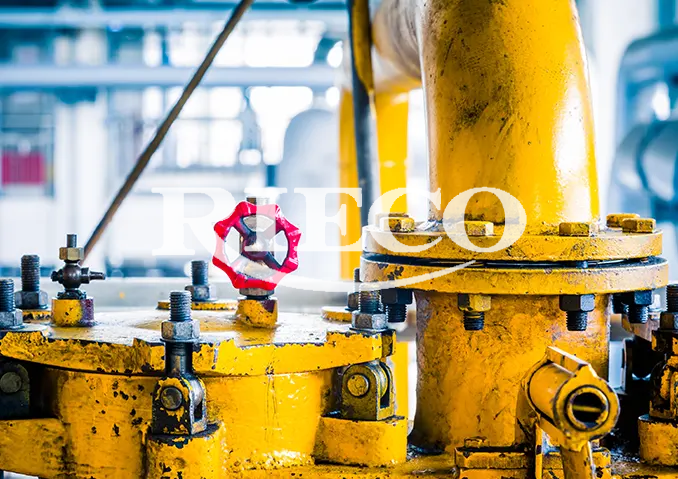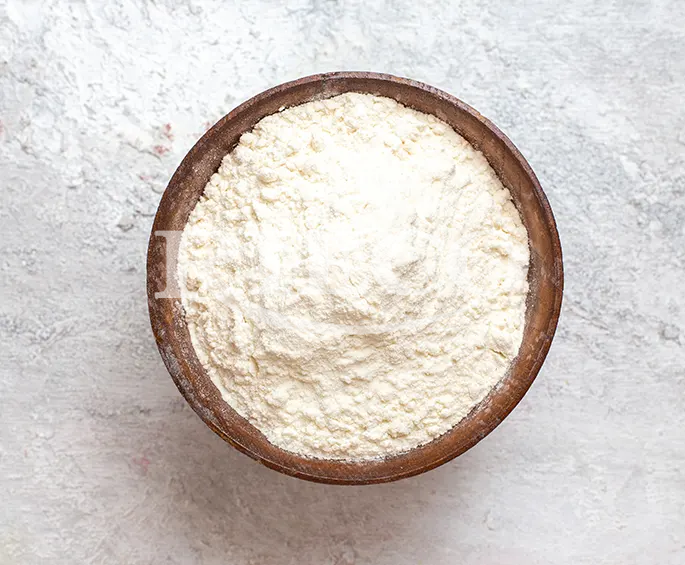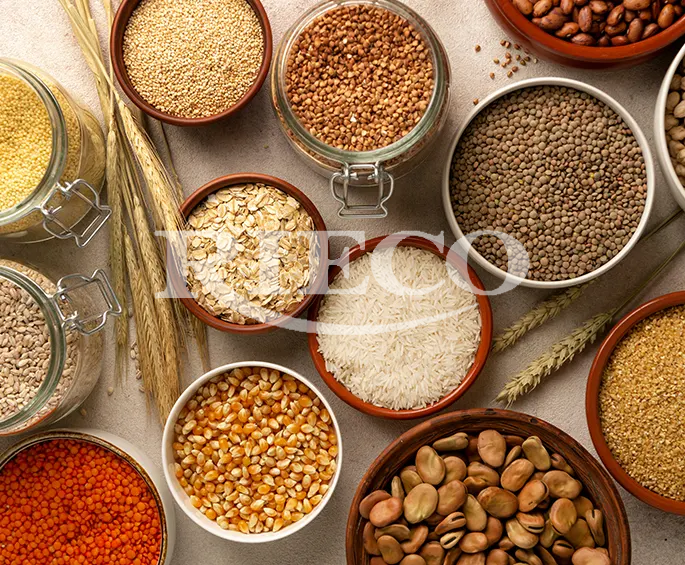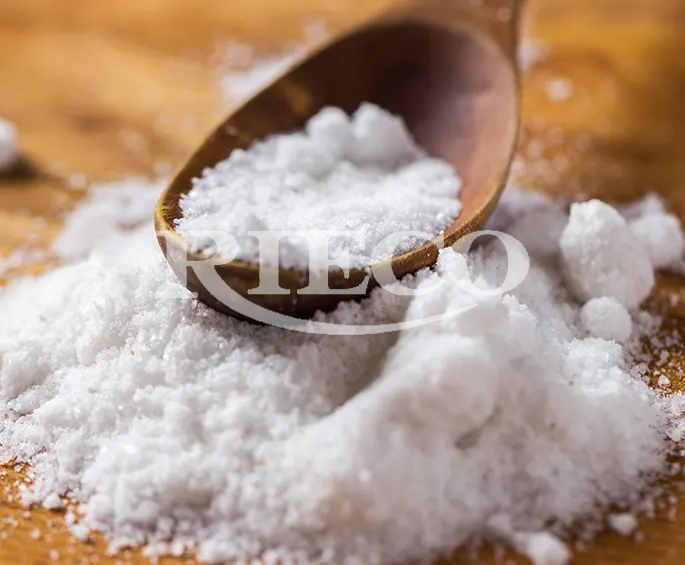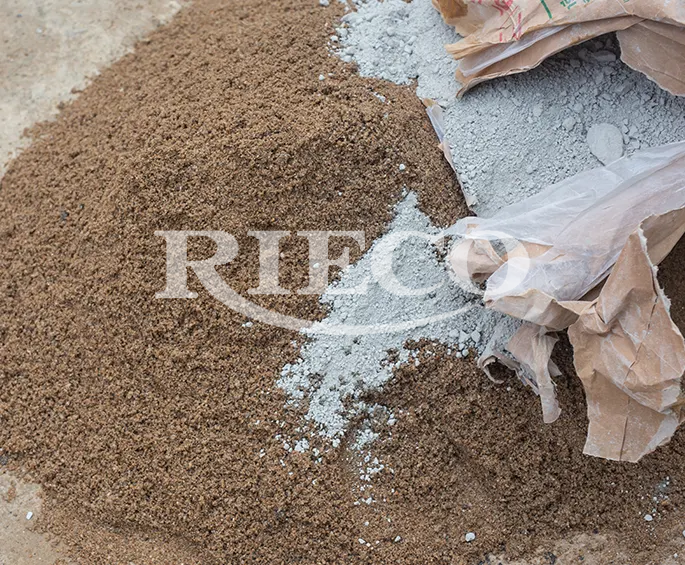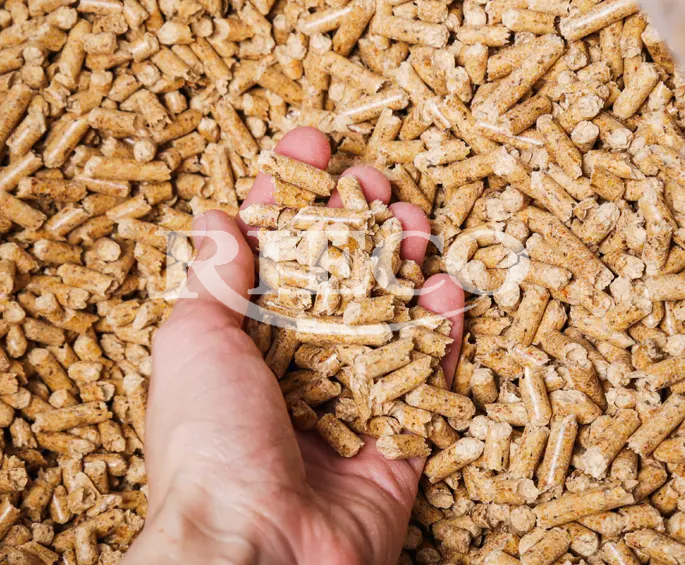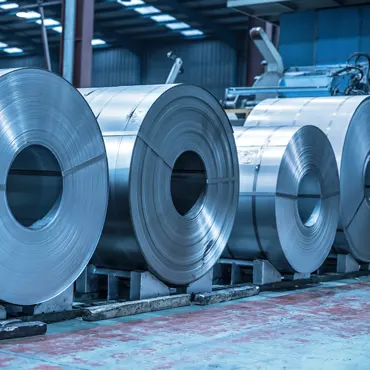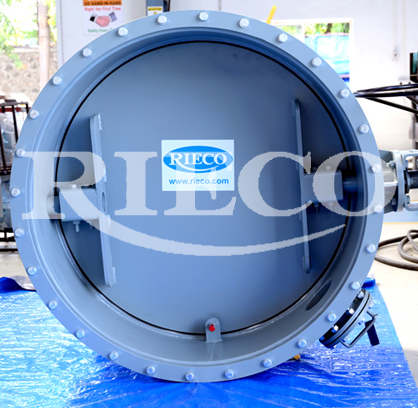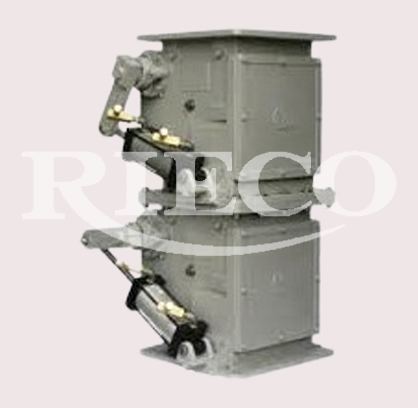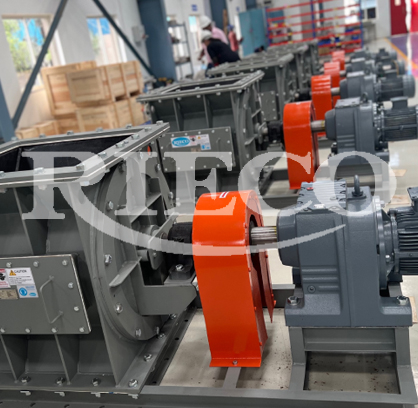
Slide Gate Valves
Rieco’s Slide Gate Valve is a versatile and reliable equipment specifically designed to seamlessly fit into systems handling dry bulk materials. It is designed to highest safety standards of operators and technicians. The slide plate of the valve, being the critical component that interacts directly with the material flow, is thoughtfully designed to remain unexposed.
Furthermore, this knife gate valve plays a critical role in industries where solid, granular, or powdered pellet materials need to be reliably discharged from silos, bins, cyclones, or hoppers, under positive or negative pressure conditions. Whether it is in the rigorous environment of a flour mill, the demanding landscape of a cement plant, or the precise operations of a pharmaceutical facility, Rieco's Slide Gate Valve proves to be an indispensable asset, delivering unparalleled control and reliability where it matters most.
With Rieco's Slide Gate Valve, you are not only investing in a high-quality, durable piece of equipment but also in an immanently safe and efficient solution for your bulk material handling needs.
Operation of Slide Gate Valves
A slide gate valve operates through a simple yet effective mechanism that is designed to control the flow of dry bulk materials. Here's how it works
- Slide Plate Movement At the core of the valve is a rectangular stainless steel slide plate. This plate is the primary component responsible for either allowing or halting the flow of material.
- Polymer Plate Compression The valve is designed with two hard polymer plates, which are compressed together. These plates serve as the guides and sealing surfaces for the slide plate.
- Opening and Closing Action To operate the valve, the stainless steel slide plate moves (or 'slides') between these two compressed polymer plates. Moving the slide plate in one direction opens the valve, allowing material to pass, while moving it in the opposite direction closes the valve, stopping the material flow.
- Sealed Closure In the closed position, the two hard polymer plates hold the stainless steel slide plate tightly. This secure hold prevents both the conveying air and the materials from escaping through the valve, ensuring a tight and effective seal.
- Self-Cleaning Mechanism One of the standout features of this slide gate valve is its self-cleaning ability. As the slide plate moves to and fro between the polymer plates during operation, it effectively cleans off any residual material that may have adhered to it. This ensures that the valve remains free of material buildup and operates smoothly over time.
In summary, the operation of the slide gate valve involves the movement of a stainless steel slide plate between two compressed polymer plates, enabling precise control of material flow with a reliable sealing mechanism when closed, and a self-cleaning action with every stroke.
Features
- Compact Design: Designed with a minimum flange-to-flange height, this slide gate valve is optimized to require minimal installation space.
- Versatile Installation: Ideal for both new installations and retrofitting existing systems, offering seamless integration into various setups.
- Selectable Materials for Free Flow Control: Users can specify the sliding knife and seal materials, ensuring free and smooth flow control of bulk solids according to specific needs.
- Variety of Flange Options: Available with both square and circular inlet/outlet flanges, providing flexibility to suit different installation requirements.
- Replaceable Seals for Zero Leakage: Features replaceable polyurethane, gland packing, and silicone seals. These components ensure continuous performance without material leakage.
- Diverse Construction Options: Depending on application requirements, options include cast steel, cast aluminium, and welded steel construction slide gate valves.
- Custom Design Availability: Custom-designed slide gate valve models are available to meet unique application needs. For food and sanitary applications, stainless steel models are offered, while abrasive bulk solids applications can opt for Hardox steel models.
- Position Indicators for Remote Monitoring: Equipped with position indicators that allow operators to easily ascertain the valve's position from a distance, enhancing operational safety and efficiency.
Why Rieco?
in your process challenges.
Industries We Cater




we are happy to answer



